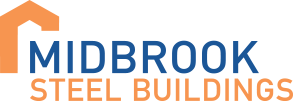If TL;DR (Too Long; Didn’t Read) is your mantra then the short answer is “yes”! If you’d like to understand just why steel buildings are at the very vanguard of the push to a greener future and how they can be made even more energy efficient thanks to a number of additions then read on.
Why steel?
Steel buildings are increasingly the go-to option, with steel buildings for warehouses, steel framed industrial buildings and cold rolled steel buildings all regularly taken up by companies across a range of industries thanks to their many benefits. Among the many advantages of steel as a material for buildings include:
- Flexibility – steel buildings can be partially disassembled to allow for expansion or shifts in layout
- Time – steel framed buildings can be constructed very quickly and with minimal disruption thanks to the fact that most of the parts are made to measure off site.
- Recyclable – steel buildings are almost 100% recyclable, contributing to their green profile.
- Maintenance cost – steel buildings are cheap to clean and maintain and can be easily made pest-proof. They are also cheap to heat and cool which of course contributes to the crux of this article; their excellent energy profile.
So, what makes steel buildings energy efficient?
Before getting further into this what do we mean when we talk about a building’s energy efficiency? Essentially, we are talking about how many fossil fuels and how much electricity will be needed to build and sustain the building going forwards. Steel buildings certainly benefit from lower energy consumption based on these criteria as less energy is needed to construct them than for more traditional buildings and less energy is needed to heat and cool them moving forwards. Energy efficiency has become a top priority in the construction trade, but also for many companies who seek to take advantage of the benefits steel brings to the table in this respect.
Options to make steel buildings even more energy efficient
Cool Metal Roofing
Such roofing is designed to reflect the sun’s rays rather than absorbing heat into the building itself, which manifests in reduced need for heating and cooling, boosting energy efficiency and reducing heating and air-conditioning needs and costs. Additions like this are also beneficial for reducing the ‘urban heat island effect’.
Solar Panels
Another option to reduce the environmental impact of heating the building even further.
High-performance insulating
Steel buildings are perfect for the integration of high-performance insulation – one of the most effective ways of boosting energy efficiency. The insulation in any steel building will have the effect of slowing down the movement of heat, keeping it trapped inside in winter and outside in summer. This reduces energy usage. The single most important area to insulate is in the roof, although more can be done to provide greater energy improvements. There are a variety of options when it comes to insulation, including reflective foil, insulated panels and rigid boards. All come with advantages and disadvantages and vary in cost.

